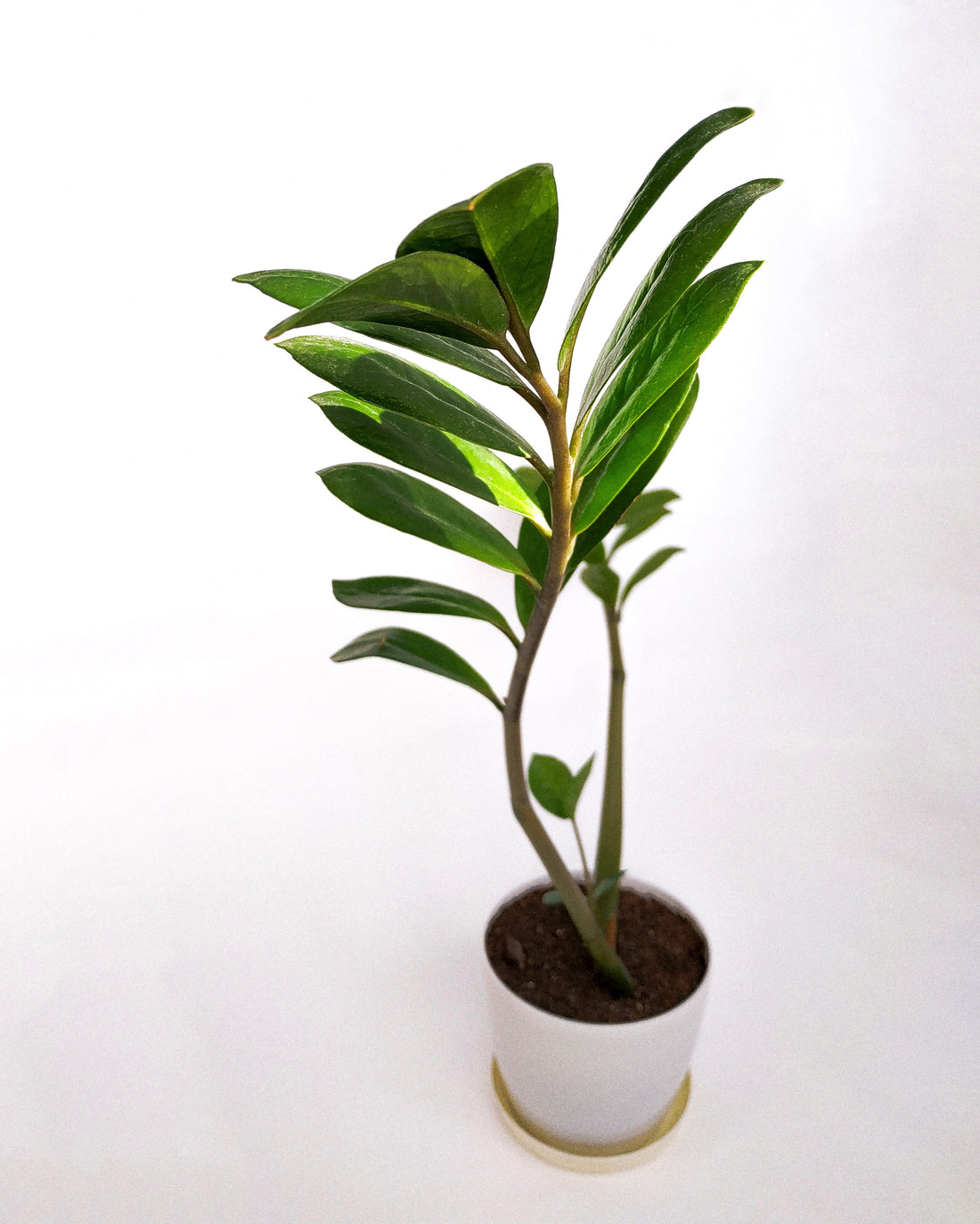
Plants 101
Why Are My Plants Leggy?

If you’ve noticed that your plants are stretching up tall or leaning to a particular side, your plant may be craving more sunlight.
After your new plant settles into your home and adjusts to its new environment, you may notice some visible changes that you weren’t expecting: stretching leaves, plants leaning over toward your window and more.
Most of the time, this all has to do with one big factor: the amount of sunlight your plant receives, or how it is receiving its sunlight. If your plant has too little sunlight, it will adapt to make sure it’s receiving optimal sunlight each day, which is why you see a physical change.
We’ll walk you through each symptom your plant might be facing and share how to fix it.
Phototropism
 If your plant is stretching toward your nearest window or light source, it is likely experiencing phototropism, which is a plant’s tendency to stretch toward light in order to receive as much sun as possible.
If your plant is stretching toward your nearest window or light source, it is likely experiencing phototropism, which is a plant’s tendency to stretch toward light in order to receive as much sun as possible.
They will also stretch in this way when they are only getting light from a single direction, which causes your plant to grow toward the light source instead of evenly all around. Phototropism can occur for every plant, whether or not they are getting sufficient light due to auxin, a plant hormone that influences the elongation of plant cells.
A healthy plant that stretches is perfectly natural if it’s only receiving light from one direction and will need to be rotated weekly for even growth. Otherwise, we recommend using an overhead grow light instead of rotating your plant. If your plant is not getting sufficient light, we would diagnose your plant’s issue as etiolation instead (more on that below).
Etiolation
 If your plant has long inter-nodal space between leaves (also what we and many other plant people call “legginess”), paleness, weakened or collapsed new growth and stems, this is etiolation. This happens when your plant is placed in insufficient light and over time, your plant grows taller to try to capture as much light as possible.
If your plant has long inter-nodal space between leaves (also what we and many other plant people call “legginess”), paleness, weakened or collapsed new growth and stems, this is etiolation. This happens when your plant is placed in insufficient light and over time, your plant grows taller to try to capture as much light as possible.
In the process of trying to absorb more light, the stems elongate, the leaves lose their color and leaf drop can occur. These symptoms happen because the plant is focusing its energy toward growing up against gravity and toward the light rather than on proper growth and development.
The best way to fix etiolation in your plants is to increase light to prevent physical changes from happening over time. We recommend moving your plant closer to a window, or if you live in a particularly dark space, add an artificial light source instead. The existing foliage that is elongated will not be able to grow strong again, so you can prune back any old growth so that new, healthy growth can develop.

Words By The Sill
Empowering all people to be plant people—a collection of articles from The Sill's team of plant experts across a variety of plant care topics to inspire confidence in the next generation of plant parents. Welcome to Plant Parenthood™.
Do Some Plant Shopping